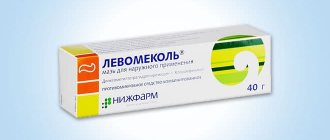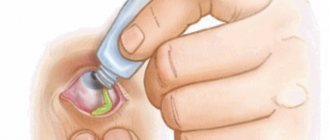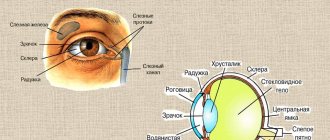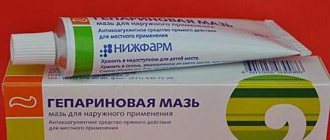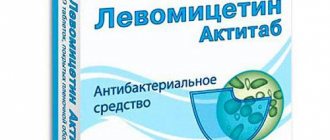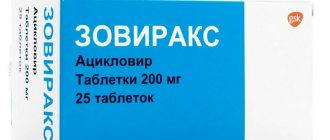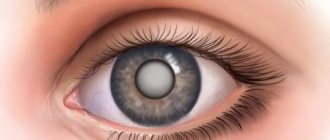Purulent processes of soft tissues are very common: open purulent wounds, festering postoperative wounds, abscesses as a result of suppuration of hematoma, boils, carbuncles, bullous forms of pyoderma, as well as hidradenitis, panaritium. They occur when pyogenic microbes - streptococci, staphylococci, Pseudomonas aeruginosa and other bacteria - enter the tissue. A characteristic property of these microbes is the release of enzymes that destroy tissue.
Decaying tissues plus bacterial waste products form pus, which collects in a cavity limited by a protective shaft. This can happen with either an open or a closed wound; microbes can enter through the lymph or blood flow. Depending on the nature of the pathogen, the pus can be white-yellow, greenish or dark in color; with anaerobic flora (Proteus, E. coli) it has a putrid odor.
Signs of wound suppuration are redness of the skin, tissue swelling and throbbing pain. If the wound is open, purulent discharge appears from it. Such a wound is easier to treat and clean. If the abscess is located under the skin, then removal of the pus is necessary for the reason that it is easier for it to spread deeper, where the tissue is looser and the skin is a rather dense layer. That is why, in order to remove pus, the abscess is opened and ointments are used that will help draw out the pus from under the skin, from the wound.
Medications
The concept of “pulling out” pus is figurative, and rather colloquial. There are ointments that help get rid of the purulent process faster; they are divided into 3 groups:
- Promoting the discharge of pus.
- Antibacterial.
- Wound healing.
Ointments that promote the drainage of pus
A feature of this group of ointments is the ability to soften the layers of the skin and thereby create conditions for pus to escape when the ulcers are closed:
Ichthyol
Ichthyol is rightfully considered the best for drawing out pus, an oily substance obtained from resins, and the sulfide and ammonium groups included in its composition are capable of loosening the epidermis, diluting pus, and reducing inflammation;
Vishnevsky ointment
Contains natural ingredients - tar, castor oil, xeroform, helps soften the skin, reduce swelling and inflammation, facilitates the drainage of pus.
Antibacterial ointments
They contain broad-spectrum antibiotics or antiseptics (chloramine, iodine, furazolidone and others). They are used to cleanse open purulent wounds. The range of these products is extremely wide, depending on the composition.
Levomekol
Antibacterial ointment based on the strong synthetic antibiotic chloramphenicol, which effectively affects various pyogenic microbes. In addition, the composition includes a substance that stimulates healing - methyluracil.
Streptocide
Contains the antibiotic streptocide - the most effective in case of presence of streptococci in the wound that have caused suppuration.
Tetracycline ointment
Contains a broad-spectrum antibiotic, tetracycline, against various types of pyogenic microbes.
Other antimicrobial ointments
Made on the basis of antibiotics - gentamicin, erythromycin, polymyxin ointments, bactroban, baneortsin, syntomycin, pyolysin, as well as on the basis of antiseptics - bepanten, bemilon, fucidin, iodopirone, chlorhexidine. These are just a few examples.
Wound healing ointments
They are prescribed when the wound is already cleared of pus, to replace antibacterial agents. The most popular ointments are: methyluracil, aloe, apropol (with propolis), solcoseryl cream, actovegin and their other analogues.
Mode of application
The first group of ointments for removing pus is usually applied to intact skin (for a ripening boil, abscess, abscess on the finger). Apply a napkin generously moistened with ointment and cover with wax paper or film.
Antibiotic ointments are usually applied to the wound surface because they penetrate little through the skin. The wound is first washed with hydrogen peroxide and dried with a napkin.
Place a loose sterile napkin with ointment for 1-2 days.
Wound healing agents are used on cleaned wounds to stimulate tissue restoration and the healing process.
After treatment with furatsilin solution, place a loose napkin with ointment for 2-4 days.
Levomycetin analogues: review of effective drugs
Levomycetin is an effective antibiotic that is used to treat various bacterial pathologies. The product is inexpensive and is sold in every pharmacy. However, it has many contraindications. Therefore, it is often necessary to select analogues of Levomycetin.
Brief characteristics of the drug
When choosing analogues of Levomycetin, you should consider which dosage form should be replaced. This product can be produced in the form of:
- Alcohol solution;
- tablets;
- capsules;
- ointments;
- eye drops.
The active ingredient of the medicine is chloramphenicol. This substance is included in the amphenicol category. Thanks to the use of the drug, it is possible to cope with different types of bacteria.
In addition to the standard drug, other forms of the drug are often used. These, in particular, include Levomycetin Aktitab, Levomycetin DIA, Levomycetin AKOS.
Tablet forms of the drug are used for diarrhea, typhoid fever, cystitis, and brucellosis. The drug helps treat dysentery, purulent peritonitis and many other pathologies. Eye drops are indicated for conjunctivitis.
Effective analogues of tablets
Levomycetin is considered a potent drug that has many side effects. Therefore, there is often a need to choose other tablets for diarrhea. Today there are many medications known that help cope with the problem and do not cause harm to health.
So which is better to use? The most effective drug substitutes are presented below:
- Monural;
- Cefuroxime;
- Nolitsin;
- Amoxiclav;
- Tetracycline;
- Gentamicin;
- Roxithromycin.
Monural
This drug is considered one of the most harmless drugs because it has a minimum of side effects. The main component of the drug is fosfomycin, which will be an excellent alternative to chloramphenicol. Monural copes well with bacteria that provoke inflammatory damage to the urinary system.
To cope with the primary infection, it is enough to take the medicine once. If the disease recurs, repeated use may be required.
Although this remedy is considered relatively harmless, it should not be used if you have kidney or liver failure. The substance is not recommended to be combined with metoclopramide, as this reduces its effectiveness.
These are fairly good tablets that are well tolerated and do not provoke negative reactions. But sometimes allergies or dyspeptic symptoms may develop.
Amoxiclav
A strong antibiotic that includes amoxicillin and clavulanic acid. The product has a pronounced therapeutic effect and helps to cope with pathogenic microorganisms that provoke inflammation.
The use of Levomycetin analogue is prohibited for blood diseases. Contraindications also include high sensitivity to the composition and liver failure.
Pregnant and nursing mothers should use this substance with great caution. During the treatment period, it is recommended to stop breastfeeding.
On a note. The medicine may increase the toxicity of certain drugs and reduce their effectiveness. Before starting therapy, you should carefully study the instructions.
Cefuroxime
This drug is included in the category of cephalosporins. It is often used for pyelonephritis, cystitis, urethritis and other infectious lesions of the urinary system.
Cefuroxime is prohibited for use in severe forms of renal failure. Contraindications also include diseases of the digestive system, bleeding, and lactation. During pregnancy, only a doctor should prescribe this medication.
An overdose of the drug carries the risk of unwanted reactions of the nervous system. They manifest themselves in the form of increased agitation and convulsive syndrome. Combining the substance with diuretics has a negative effect on kidney function.
When using the product, allergy symptoms, dyspepsia, and vaginitis may occur. Therefore, it is permissible to use the substance only for its intended purpose.
Gentamicin
This medicine is produced in the form of solution and powder. This antibiotic has a powerful effect. It is often prescribed for infectious pathologies of the urinary system.
The medicine should not be used for kidney problems. Also contraindications include auditory neuritis. The dosage should be selected by the doctor who carries out the therapy. It is prohibited to use Gentamicin on your own. This may cause dangerous consequences.
Roxithromycin
This substance is produced in tablet form. The main difference from Levomycetin is that the drug helps cope with chlamydia and ureaplasma. However, the medicine should not be used for porphyria. It is not prescribed to children under 12 years of age.
In case of kidney or liver failure, it is permissible to use the medicine. However, this can only be done under the supervision of the attending physician. In this situation, dosage adjustments are usually required.
Nolitsin
This substance belongs to the category of fluoroquinolones. This is a very powerful medicine, which is often used to replace Levomycetin. Contraindications include age less than 18 years, the presence of epilepsy, complex kidney and liver damage.
It is important to consider that the antibiotic leads to a decrease in the effectiveness of nitrofurans. Therefore, it is not recommended to combine these substances.
On a note. It is not advisable to use the medicine during pregnancy and breastfeeding. This is due to insufficient information regarding the effect of the drug on an unformed organism.
Substitutes for local forms of the drug
This medicine comes in different forms, one of which is eye drops. This remedy is actively used in ophthalmic practice and helps cope with bacterial infections.
Despite the high effectiveness of the medicine, the question often arises of what to replace Levomycetin. Depending on the age category and the degree of complexity of the disease, doctors recommend the following remedies:
- Albucid;
- Phloxal;
- Oftalmoferon;
- Normax.
In addition, the product can be replaced with Tobrex. This substance belongs to the category of aminoglycosides and has a wide spectrum of action. When choosing Levomycetin or Tobrex, you should focus on the tolerability and effectiveness of the drug. The difference between these drugs lies in the active ingredient.
When choosing Levomycetin or sodium sulfacyl, you should pay attention to the second substance, which is the active ingredient of the popular drug Albucid. It is usually used for conjunctivitis, blepharitis and other eye diseases.
For ear pathologies, Tsipromed is usually prescribed. If local treatment of damaged surfaces is required, use Syntomycin or Levomekol.
Levomycetin is a very effective antibacterial medicine that helps cope with a wide variety of infections. However, sometimes it provokes unwanted side reactions. In such a situation, doctors will select effective analogues that have a similar principle of action.
If you liked the article, we invite you to write reviews and like it!
Source: https://PriPonose.ru/lekarstva/l/analogi-levomicetin.html
Comparison of drugs
Levomekol contains two active components - an antibiotic and an anti-inflammatory agent. Tetracycline contains only an antibiotic, but its spectrum of influence is wider.
Non-surgical eye treatment in 1 month.
The difference between the medications is that the first is used to treat superficial diseases, that is, when the eyelid is damaged, barley. Used only from the age of 8, as it disrupts bone formation.
The second is prescribed for infectious lesions; it is allowed to be applied to the mucous membrane, since 1% ointment is ophthalmic. It is allowed to be used from the age of three, in some cases it is prescribed to infants.
Erythromycin ointment
An antibiotic for external use, used to treat eye infectious and inflammatory diseases.
The main active ingredient of the drug is erythromycin . 1 g of the drug contains 10,000 units of erythromycin . Also contains: lanolin, petroleum jelly and sodium disulfite.
Indications for use:
- Conjunctivitis (including blepharoconjunctivitis).
- Bacterial blepharitis.
- Meibomite (barley).
- Keratitis.
- Ophthalmia of the newborn.
- Chlamydia eye infection.
- Trachoma.
Contraindications:
- Allergy to the components of the drug.
- Severe liver diseases.
It is worth using the medication during pregnancy and lactation and for treating infants only if the risk of side effects is lower than the expected benefit. Erythromycin passes into the placenta and breast milk.
Side effects : the occurrence of allergic reactions (redness, itching, burning, tissue swelling, increased tearing). With prolonged use of the drug, the development of a secondary infection is possible (as a result of microorganisms becoming accustomed to the active substance).
Produced in Russia. Available without a prescription.
What's better
If the pathological condition affects the mucous membrane, Tetracycline is used. It's more efficient. Use according to doctor's recommendations.
For skin diseases - barley, abscess, eczema, dermatitis, papilloma, boil - the second remedy is suitable. This is a wound-healing drug with bactericidal and anti-inflammatory properties. Promotes rapid breakthrough of ulcers, accelerates healing, prevents spread and relieves inflammation.
Similarities
Both medications are antibiotics and are intended to treat infectious eye diseases accompanied by the discharge of pus. They have a bacteriostatic effect - they suppress the proliferation of pathogenic microorganisms.
The products are produced in the form of an ointment and contain the same base - petroleum jelly, lanolin, sodium disulfite.
Erythromycin and tetracycline have the same indications for use - various types of conjunctivitis, blepharitis, keratitis, barley and trachoma. They can be used during pregnancy and breastfeeding, but only according to strict indications and provided that the expected benefit is higher than the risk of side effects in the fetus and child.
Both substances, erythromycin and tetracycline hydrochloride, form salts with calcium and iron ions, so it is not recommended to use medications simultaneously with dairy products (as they contain calcium), preparations containing iron, calcium, aluminum and magnesium salts.
The side effects of the products are also the same - they can cause burning and itching of the skin, swelling and hyperemia of the tissues.
Both drugs are produced in Russia and are sold without a prescription.
Simultaneous use of Levomekol and Tetracycline
Medicines contain different active ingredients, but their effects are similar. Simultaneous administration of drugs is possible only in particularly difficult situations.
In case of mild pathology, it is not recommended to combine these formulations. It can cause harm to the body.
Closed wounds are the most dangerous type of skin injury. With such injuries, an abscess often occurs: pus formed during the fight against infection accumulates under the skin and causes inflammation. To get rid of the formation, pharmaceutical ointments are used that draw out pus from a closed wound and traditional medicine that can replace them.
Use special ointments to draw out pus from a wound.
What is better and more effective: chloramphenicol or tetracycline - Website about
There is often a need to draw out pus in case of furunculosis, deep pimples and abscesses. Under no circumstances should you squeeze out the contents with your fingernails or improvised means - you can cause an infection and provoke the development of an abscess.
The simplest and most effective way to draw out pus is ointment.
Which product should I choose for this from the abundance of modern imported and domestic products? In this article you will find out which ointment draws out pus most quickly and effectively, and also read reviews about the most common drugs.
How to replace ointment at home?
If you don’t have a pharmacy on hand, you can replace the ointment for drawing pus from the wound with folk remedies. There are several popular and effective recipes that will help with boils, ulcers and abscesses.
Aloe works best for abscesses and ulcers. The leaves and juice of this plant are used to treat festering wounds and inflammations.
Aloe compress is prepared as follows:
- Cut the aloe leaf in half, squeeze out the juice from both parts, moisten gauze in it and apply it to the damaged area.
- If a sheet is applied, cut it in half and press the inside of it to the wound.
- Secure the bandage with a bandage, preferably cover with cotton wool.
- Keep on the wound for 8-10 hours, then repeat.


